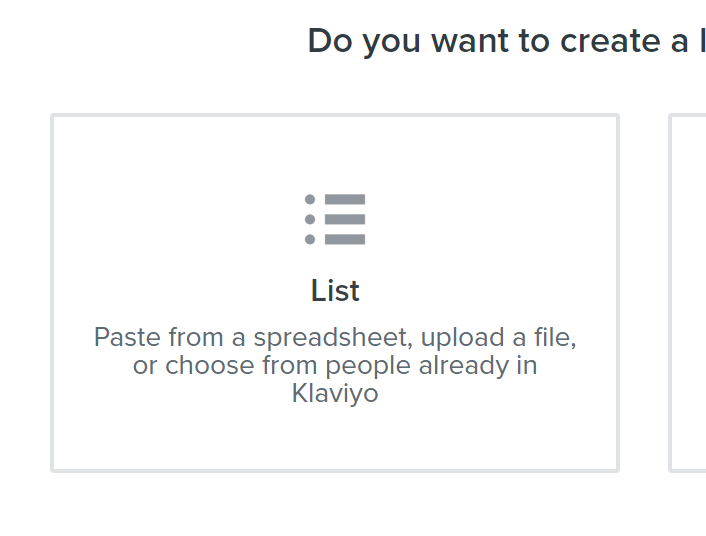Hello @froda,
First, welcome to Klaviyo! We’re thrilled to have you on board. And thank you for sharing this question with us in the Community.
All of the methods for adding a user to an existing list are outlined in our article here. This includes uploading users to a list via a .csv file (which will not create duplicates if they already exist in Klaviyo) and also adding them via the “quick add” button. The former method is better if you’re looking to add a lot of contacts to the list and the latter is better if you’re looking to add just a handful. Both methods can be applied to existing contacts in your Klaviyo account. I also recommend checking out our article on adding users to lists here.
An additional way to capture individuals who already exist in Klaviyo is to create a segment. Segments are groupings of contacts defined by a set of conditions. For example, if you wanted to capture individuals who placed an order in the last 7 days, you could achieve that with segmentation by using What somebody has done > placed order > in the last > 7 days. Similarly, you can use segment criteria to group lists together. For example, If somebody is in a list > is in list A OR If somebody is in a list > is in list B. That would combine the users in List A & B into a segment (and filter out any duplicate profiles). Segmentation is the most powerful and popular way to group already existing users based on some pre-existing behavior.
I also recommend reviewing our AND/OR Guide to better understand what these mean because they are important concepts in segmentation. In short, with an “OR” criteria someone only has to meet one of the joined conditions in order to be added. For example, if someone is in list A OR in list B, if the user is a part of either list, they will be added to the segment. As opposed to “AND” which requires that the user meet all conditions separated by “AND” to join the segment. For example, if someone placed an order AND is in list A, they would have had to place an order and also be a part of list A in order to qualify for the segment.
I hope this is helpful!
This is very helpful, thank you! I was thinking that perhaps there might be an interface, where one could see all their members in lists and select individuals with a checkbox, but that presumably would only be useful for small lists. In this case I wanted to make a list of a few some staff members for testing, and I didn’t have any variables on their profile setup to segment them out into a list. I ended up just doing the csv file, and I’m glad to know it didn’t cause duplicates. I read through the list creation guide before posting here, but I appreciate the helpful reply with the other resources you shared. Much appreciated!
Is there no way to create and/or add to a new list using Shopify tags?
For example, we’d love to keep two separate “lists” in Klaviyo… one for retail customers and another for our wholesale customers. It would be great if we were able to automatically split customers into separate lists based on Shopify tags, instead of just segmenting our master list.
This would allow customers to subscribe or unsubscribe to multiple lists based on their preferences and would allow for greater control over those two lists separately.
Been racking my brain trying to figure out how to apply more automation to building these separate lists as opposed to manually duplicating/importing customers with specific Shopify tags.
Cheers,
J
Hi there @Scojo ,
I see from your initial outreach that you are looking to use Shopify tags to filter customers.
You would want to use the "Properties about someone" to the Definition vs "What someone has done"

Hope that helps
Hmmm. This doesn’t really solve the issue we were trying to tackle. We’ve certainly used this type of segmentation previously, but still doesn’t provide a solution for building 2 or more separate lists using Shopify tags.
Thanks,
Joe
@Scojo ,
By default, Shopify opt-ins should be in their own newsletter list on your Klaviyo site. I would recommend segments over lists for tags and like to refer to this HC article.


